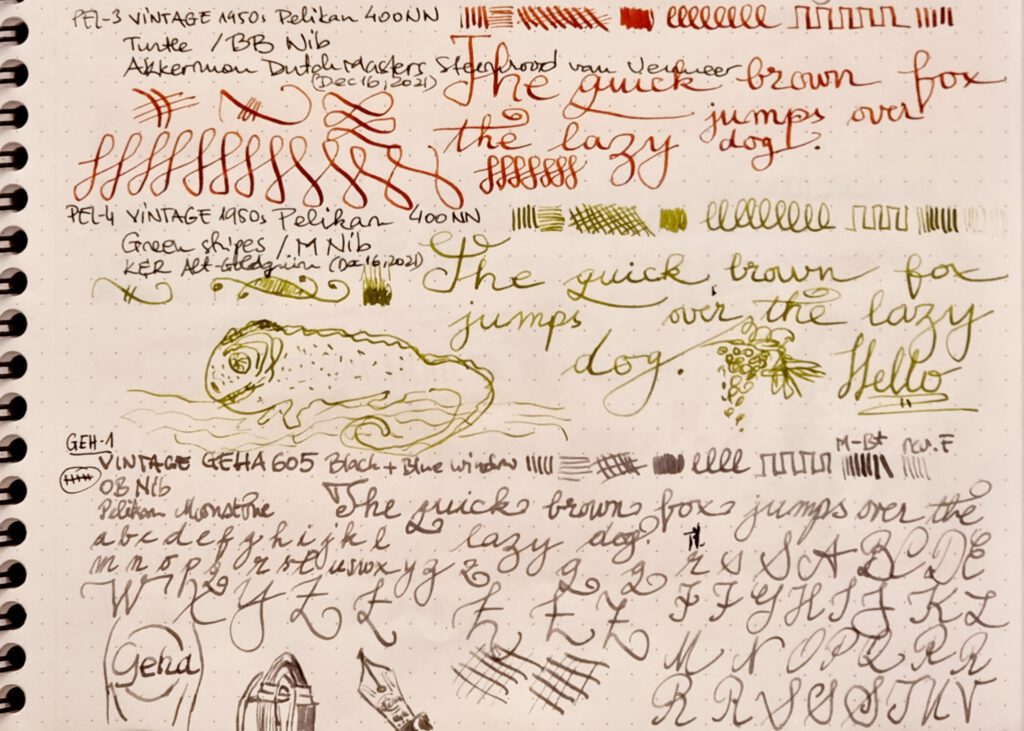TL;DR: Two Pelikan 400NN, one green-striped with 14k-gold M nib, the other tortoise brown striped with 14k-gold BB nib! Sitting next to the Geha 605 from yesterday’s post!! Joy!!!

Two, scratch this, three outstanding pens! (see Figure 1) The Pelikan 400NN and the Geha 605 were the middle-tier pens of the mid-1950s and early (to mid-)1960s in Europe. (The Pelis were priced at 25 Deutsche Marken (DM) in 1962, with the top tier priced at 38 DM (or higher, depending on gold adornments), and the third-tier 140 line priced at 15 DM. Source: The Pelikan Collectibles website [PCW].)

The pens (Figure 2): Short, supple pens with flexible nibs. Just a bit larger than Geha 605.

The nibs: Spectacular strokes! (see Figure 3) Pelikan 400NNs came with a wide range of nib-tipping capabilities, with seven regular sizes (ST for stenography, EEF, EF, and F for writing finely, M for medium, and B and BB for broad strokes); three round tipping options (KF, KM, and KB, where K stands for Kugel – Round); four left-foot and four right-foot obliques (O/RF, -M, -B, and -BB); and four write-through nibs for making carbon copies (DEF, -F, -M, and -B, where D stands for Durchschreibefedern). Twenty-two choices for tipping!
Figure 3 showcases the strokes made by Pelikan M and BB nibs, alongside the OB nib sported by the Geha 605. All of these nibs are made of 14k-gold. All of them write thinner than their modern equivalents; our hands and writing widths have increased significantly over the past six-seven decades.

To conclude: Outstanding pens for drawing and writing.
As Figure 4 suggests, these pens can write and draw (in the right hand, because the samples here need significant training.)
Enjoy the day.
References:
- Pelikan Collectibles Website, Pelikan 400NN fountain pens. Last accessed: Jan 15, 2023. Online: https://www.pelikan-collectibles.com/en/Pelikan/Models/Revised-Piston-Fillers/400NN-Basis/index.html Abbrev. as PCW.

